|
Clark
Equipment Company in World War Two
Buchanan, MI
(Currently Lexington, KY)
1903-Present
This page updated 3-9-2022.
The Clark Equipment
Company's true contribution to the winning of World War Two has been
overshadowed and masked by one of its smaller production products, the
Clark CA-1 Airborne Tractor. At most, 2,555 of these CA-1 tractors
were built during the war, and Clark only built a small portion at its
own plant. This quantity is dwarfed by the 23,000 forklift trucks
and Clarktor towing tractors built by Clark in 1945 alone. Clark
also kept the important production lines going at military truck
manufacturers by supplying axles and transmissions for many of their
vehicles. During World War Two these products were the
primary volume for the US military, even though Clark is better known for the CA-1 Airborne
Tractor it designed and built. Today the CA-1 can be found in
military museums. Its Clarktor four-wheeled aviation tractor is
also found at museums. It is still a working tractor at airports and
flying museums. Forklifts are not found at any of these venues.
Yet after World War Two, the name Clark was synonymous with forklift
trucks. Clark forklifts were predominant in the factories in which
the author worked during the manufacturing portion of my career.

The Clark Equipment Plant in Buchanan, MI
won the Army-Navy "E" Award two times during World War Two.
The Clark Equipment Tructractor Division Plant in Battle Creek, MI won
the Army-Navy "E" Award five times during World War Two.
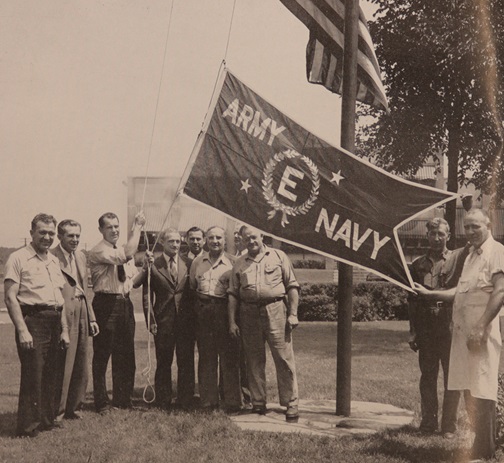
The raising of the E Flag at the Clark Battle Creek plant after it
received its second star. The plant would go on to win two more
stars before the war was over.
Clark Equipment
Company World War Two Products:
Clarktor 6 tractors, forklift trucks, axle housings for military trucks,
transmissions for military trucks, cargo carriers, castings, and CA-1 Airborne Tractors.
The Battle Creek, MI plant had $112,315,000 in major contracts during
the war. The Buchanan, MI plant had $25,476,000 in conatract and the Jackson,
MI plant had $61,000 in contracts for forgings. The total between the
three plants was $137,852,000 in major contracts during World War Two.
The Clark Tructractor Company was formed in
Battle Creek, MI in 1919 as a division of the Clark Equipment Company,
whose main products were tow tractors and forklift trucks.
Clark Equipment Forklift Trucks:
Clark forklifts were important to the
American World War Two world-wide logistical effort. The vast
quantity of war material needed to execute the war was shipped from
ports in the United States and delivered to military bases, depots, and
ports by ships. Once there, the material needed to be off-loaded
and moved. Designed to work outside, large Clark forklift trucks
facilitated this movement. They were at work at military installations
around the world, assisting in getting war material to the front lines.
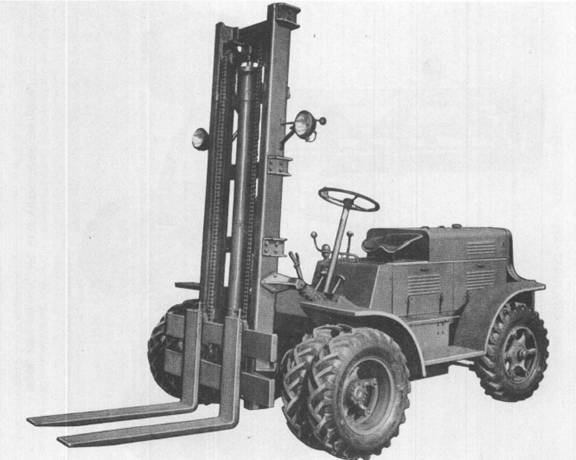
This is the standard model Clark Planeloader.
Image added 10-20-2021.
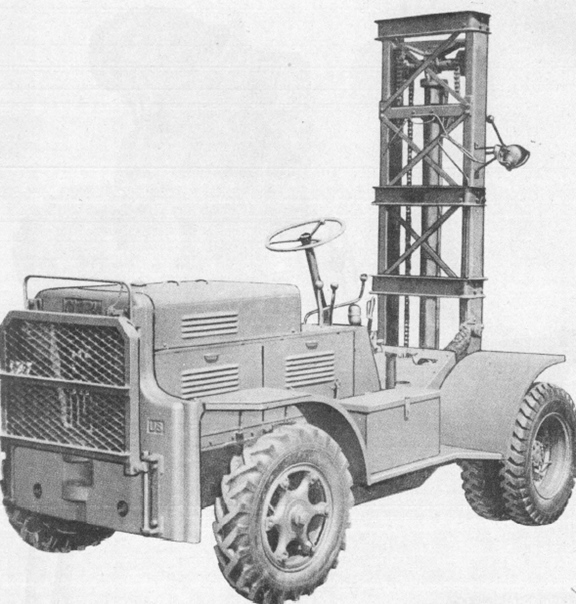
This is a 3/4 rear view photo of the
standard model Clark Planeloader. Image added 10-20-2021.
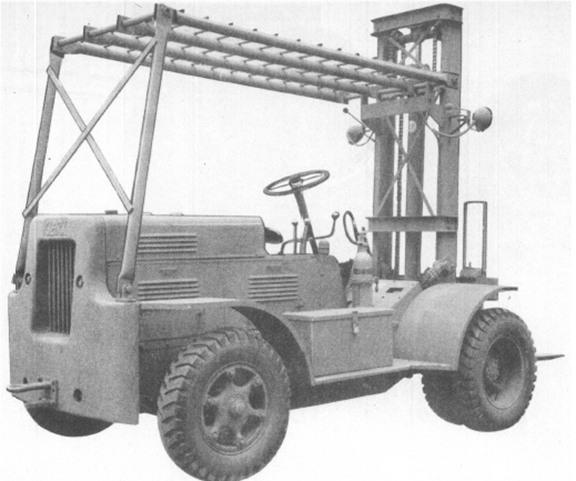
This version of the Planeloader has an
overhead safety guard and counterweight on the rear of the vehicle.
Image added 10-20-2021.
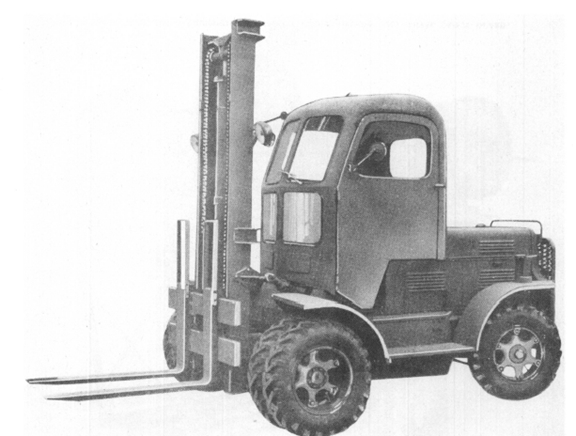
This version of the standard model Clark Planeloader came equipped with
a cab. Image added 10-20-2021.
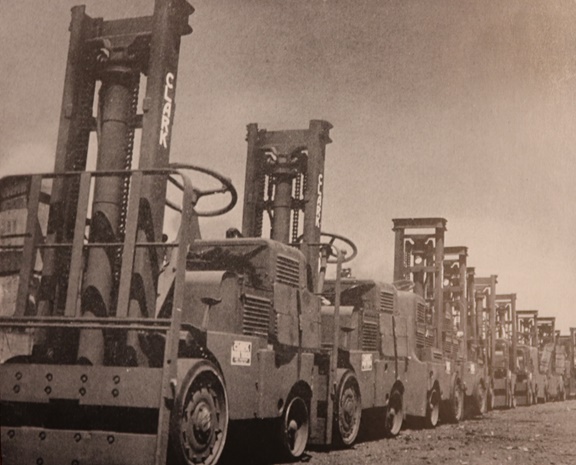
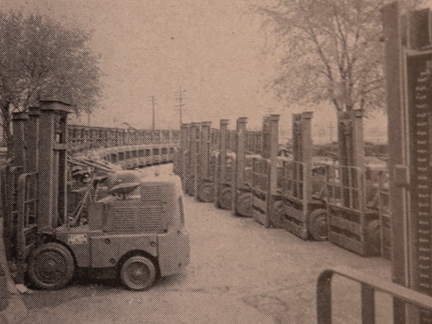
Medium and Medium/Heavy-Duty Truck Transmissions: Clark is
best known for its
forklifts and tow tractors. Its CA-1 Airborne Tractor has acquired
somewhat of a cult status, due to its small size, uniqueness, and the
limited quantity produced. Just as important was Clark's
manufacture of 608,333 transmissions for Medium Duty, and Medium-Heavy
Duty trucks during World War Two. Clark produced 571,124
transmissions in its Buchanan, MI plant for two of the most important
American trucks, the GMC 2 1/2-ton 6x6 series trucks, and the GMC 2
1/2-ton 6x6 amphibious truck, more commonly known as the DUKW.
General Dwight D. Eisenhower considered both
vehicles of paramount importance.
A quote from "The Great Crusade" by General
Dwight D. Eisenhower: "Incidentally, four other pieces of
equipment that most senior officers came to regard as among the most
vital to our success in Africa and Europe were the bulldozer, the jeep,
the 2 1/2-ton truck and the C-47 airplane."
Another quote from "The Great Crusade" by
General Dwight D. Eisenhower, in reference to the Sicily invasion: "This
change resulted from the unforeseen availability of a considerable
number of LST's and the quantity production of the "duck", an amphibious vehicle that proved to be one of the most valuable pieces of equipment
produced by the United States during the war."
|
Clark Equipment Company Transmission Production for GMC 2
1/2-ton 6x6 and 6x4 Trucks, Diamond T 4-ton 6x6 Trucks, and
Federal 4-6-ton 4x4 Tractors
The production numbers below are for the trucks. Clark Equipment, being the only supplier for the
transmissions for these vehicles, would have had similar
schedules to meet the demand for the trucks. Spare
transmissions and parts are not included in the numbers
below.
The monthly production
acceptances for the trucks noted below come from "Summary Report of
Acceptances, Tank-Automotive Material, 1940-1945"
published by Army Services Forces, Office, Chief of
Ordnance-Detroit, Production Division, Requirements and
Progress Branch
January 21, 1946 and "Engineering of Transport Vehicles,"
published by the Chief or Ordnance - Detroit. |
|
Clark Transmission Model Number |
Truck Model |
1940 |
1941 |
1942 |
1943 |
1944 |
1945 |
Total |
| 204-VO 5-speed
|
GMC 2 1/2-ton
6x6, 6x4 trucks (CCKW, CCW, AFKWX) |
8,503 |
51,537 |
135,033 |
131,030 |
131,763 |
92,111 |
549,977 |
| 204-VO 5-speed
|
GMC 2 1/2-ton 6x6
Amphibious trucks (DUKW) |
|
|
235 |
4,508 |
11,316 |
5,88 |
21,147 |
|
Total 204-VO 5-speed |
|
8,503 |
51,537 |
135,268 |
135,538 |
143,079 |
92,111 |
571,124 |
| |
|
|
|
|
|
|
|
|
|
326-VO
|
Diamond T 4-ton
6x6 trucks |
|
3,484 |
4,612 |
8,098 |
5,287 |
7,283 |
29,090 |
|
326-VO
|
Federal 4-6-ton
4x4 tractors |
|
870 |
2,048 |
1,751 |
2,633 |
817 |
8,119 |
|
Total 326-VO |
|
|
4,354 |
6,660 |
9,849 |
7,920 |
8,100 |
37,209 |
|
|
|
|
|
|
|
|
|
|
| Total Clark
Transmissions built
during World War Two |
|
8,503 |
55,891 |
141,928 |
145,387 |
150,999 |
100,211 |
608,333 |
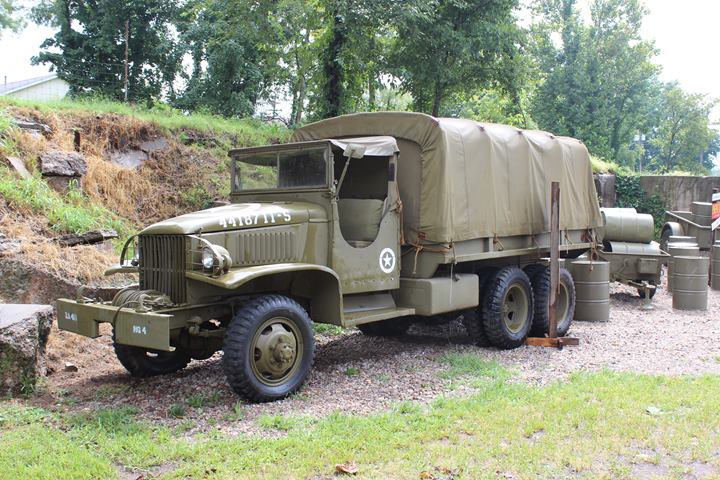
A GMC 2-1/2-ton 6x6 CCKW-353 with a
Clark 204-VO transmission. Author's photo added 8-9-2018.
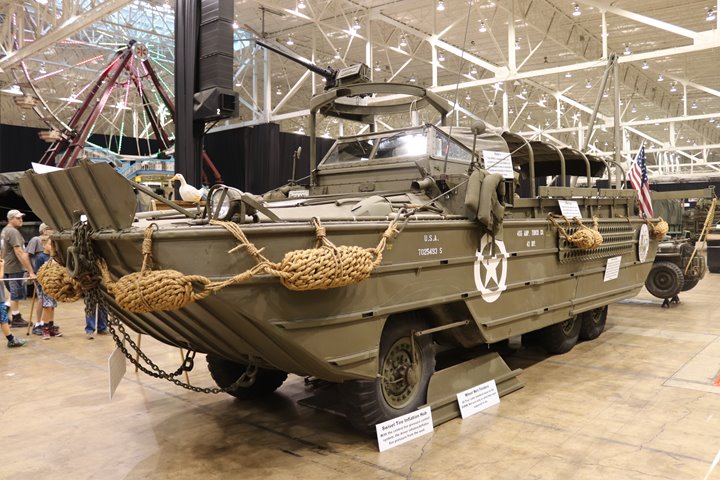
A fully restored GMC
DUKW was on display at the 2017 MVPA National Convention in Cleveland, OH.
It is one of 21,147 DUKWs that were equipped with the
Clark 204-VO 5-speed transmission.
Author's
photo added 8-9-2018.
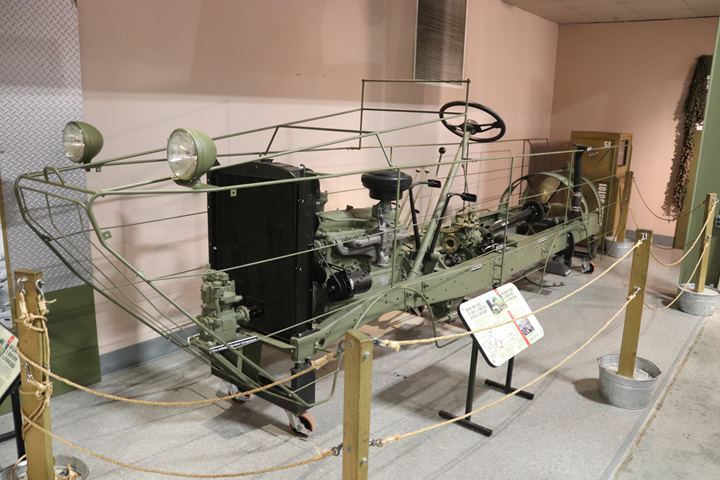
This interesting display is a cutaway of the DUKW showing its internal
structure. Author's photo from the Wright Museum of WWII in
Wolfeboro, NH, added 8-9-2018.
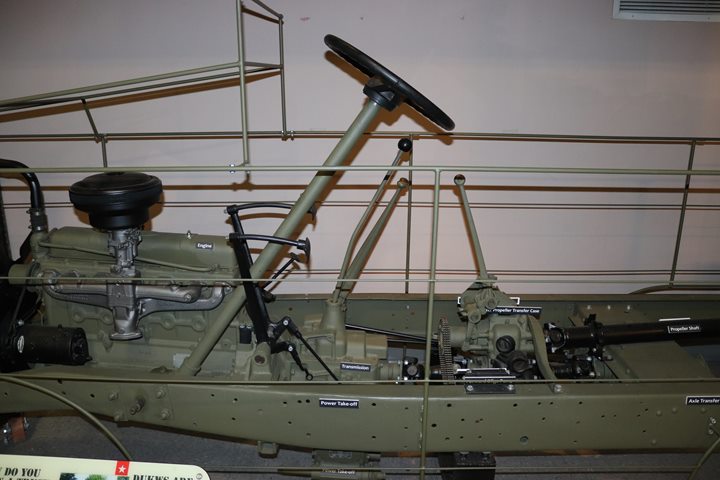
This photo shows the Clark 204-VO transmission between the GMC-built
engine and transfer case. Author's photo added 8-9-2018.
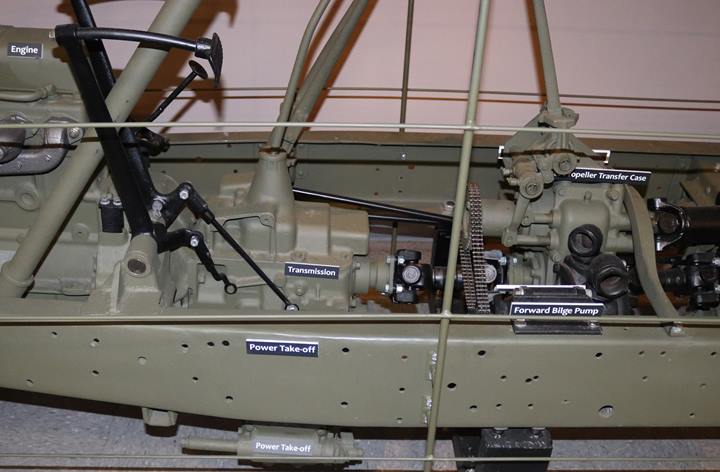
A close-up view of the
Clark Equipment Product's 204-VO 5-speed transmission.
Author's photo added 8-9-2018.
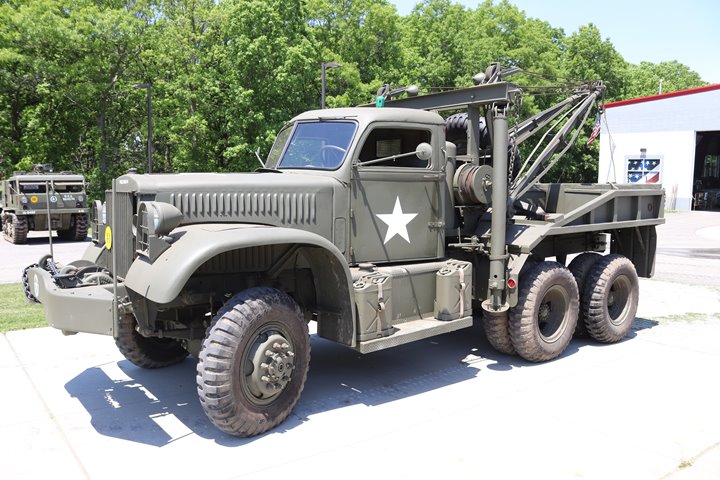
This very nice restoration of a Diamond T wrecker was one of
29,090 Diamond T 4-ton 6x6 trucks that came with the Clark 326-VO
transmission. 6,420 of the vehicles were wreckers.
Author's photo added 8-9-2018 from the Museum of American Armor in Old
Bethpage, Long Island, NY.
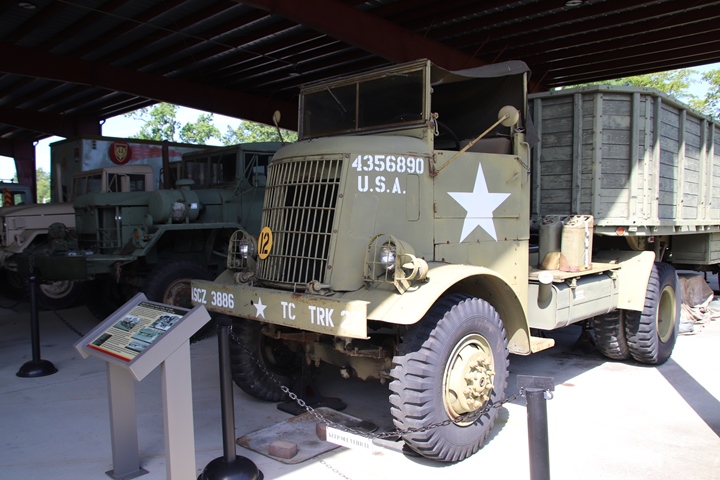
The Clark 325-VO transmission was also used
in 8,119 Federal Model 94x43 4-6-ton 4x4 Tractor COE tractors.
This one is on display at the Army Transportation Museum at Fort Eustis,
VA. Author's photo added 11-26-2021.
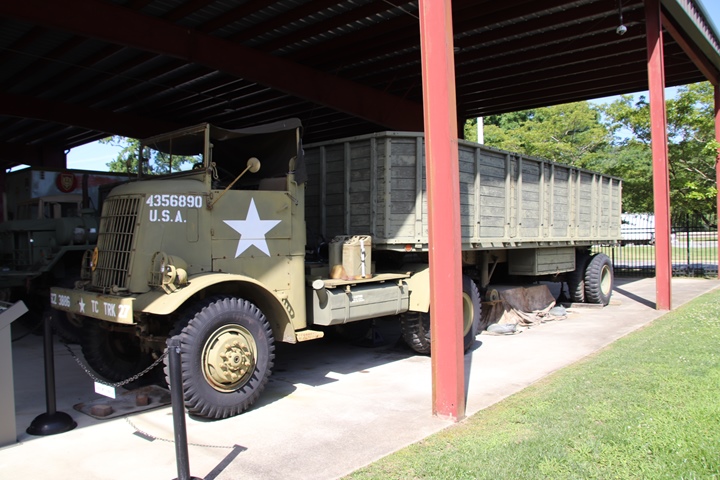
Attached to the Federal Model 94x43 is
a Highway Trailer Company Model 1025 two-wheel 10-ton semi-trailer.
Author's photo added 11-26-2021.
Clark Equipment Company Front Axle Assemblies for the
Studebaker US6 2-1/2-Ton 6x4 Truck: Clark Equipment Company
supplied 90,742 non-powered front axles for the US6 2-1/2-Ton 6x4 truck.
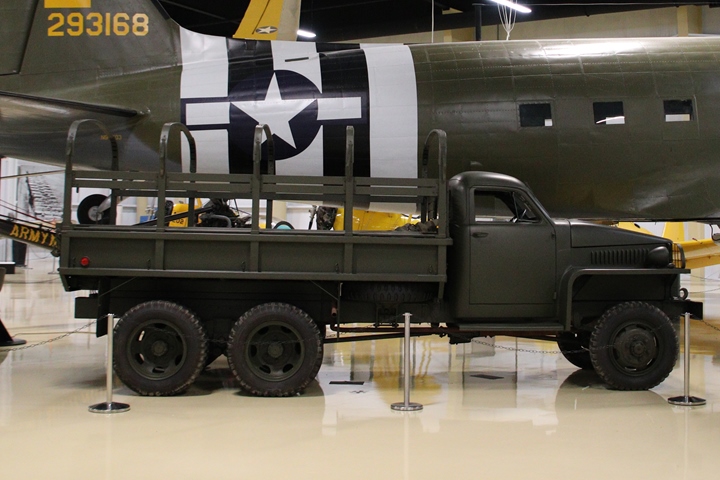
This Studebaker US6 is actually a 6x6, but with the exception of the
front axle, identical to the 6x4. Clark Equipment Company provided
its model number 105-F-151 front axle through US6 6x4 serial number 260.
Starting with serial number 261, Clark model number 105-F-152 was used.
The unpowered front axle was of I-beam construction. Author's
photo added 12-10-2021.
Clark Equipment Company Drive Axle Assemblies for the
Studebaker M28, M29, and M29C Cargo Carriers:
Clark
Equipment Company Drive Axle Assemblies for the Studebaker
M28, M29, and M29C Cargo Carriers
The production numbers below are for the cargo carriers.
Being the only supplier for the
drive axle assemblies, which included the drive axle
transmissions, differentials, steering brakes, and final
drives for these vehicles, would have had similar schedules
to meet the demand for the trucks. Spare drive
assemblies and parts are not included in the numbers
below.
The monthly production
acceptances for the trucks noted below come from "Summary Report of
Acceptances, Tank-Automotive Material, 1940-1945"
published by Army Services Forces, Office, Chief of
Ordnance-Detroit, Production Division, Requirements and
Progress Branch
January 21, 1946 and "Engineering of Transport Vehicles,"
published by the Chief or Ordnance - Detroit. |
|
Clark Drive Axle Assembly Model Number |
Type |
1942 |
1943 |
1944 |
1945 |
Total |
| S-125D-2
(First 30 units) S-126D-1 (Units 31 and above) |
Carrier,
Cargo, Light, M28 (T15) |
306 |
460 |
|
|
766 |
| 3-127D-1
|
Cargo,
Carrier, Light, M29 (T24) |
|
1,525 |
2,951 |
|
4,476 |
| 3-127D-1
|
Cargo,
Carrier, Light, M29C (T24) |
|
|
4,401 |
6,446 |
10,847 |
| Totals |
|
306 |
1,985 |
7,352 |
6,446 |
16,089 |
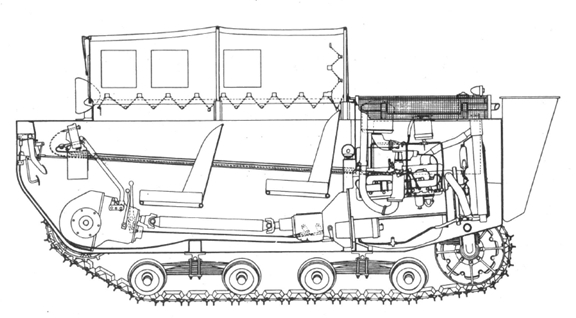
The M28 front drive cargo carrier.
Image added 10-20-2021.
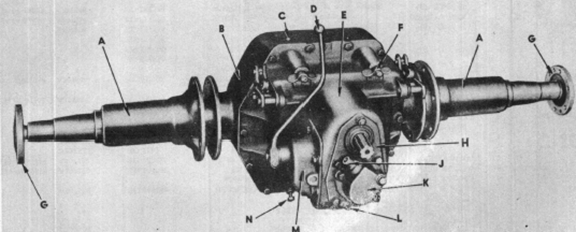
The M28 Clark-built drive axle. Image
added 10-20-2021.
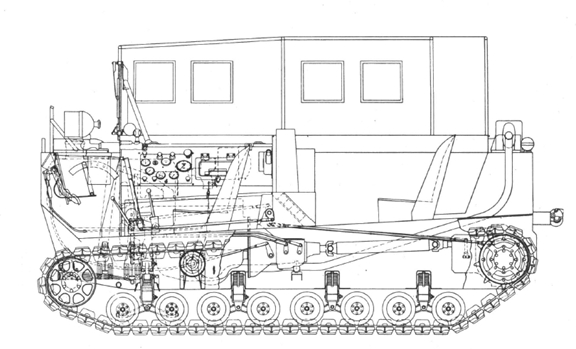
The M29 rear drive cargo carrier.
Image added 10-20-2021.
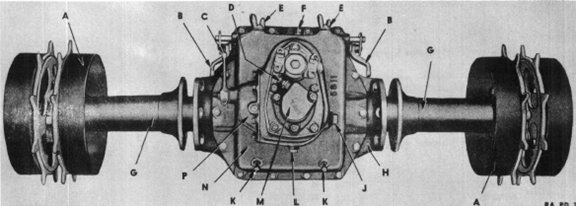
The M29 Clark-built drive axle. Image
added 10-20-2021.
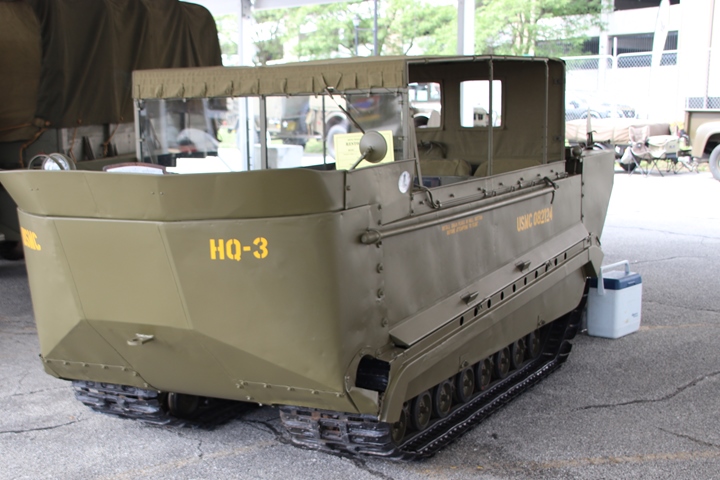
This M29C was on display at the MVPA 2021
Convention in South Bend, IN. Author's photo added 10-20-2021.
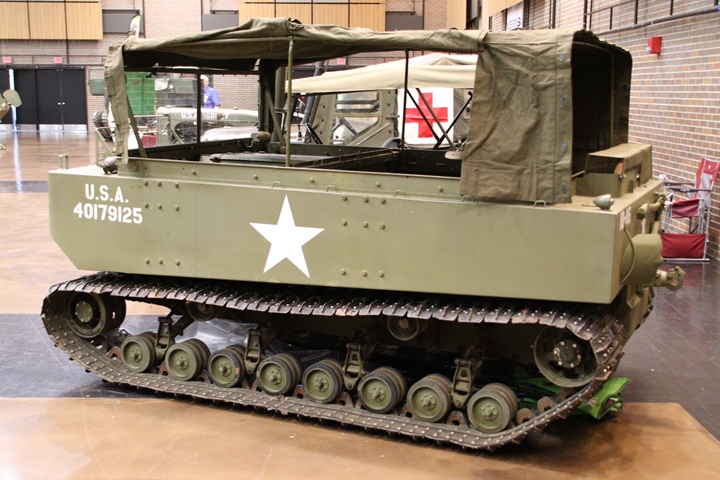
This M29 was also on display at the MVPA
2021 Convention in South Bend, IN. Author's photo added
10-20-2021.
The CA-1 Airborne Tractor: The
number of CA-1s, and which company actually built them during World War
Two, is muddled and confusing. Clark built thirteen C-1
prototypes. It then went into production as the CA-1 in late 1942.
Delivery of the first of the originally contracted 162 units began in
March 1943. In September 1943, the American Machine and Metals,
Inc. (AM&M) in Moline, IL was subcontracted for final assembly of the
CA-1 using Clark provided parts. By the time production of the
CA-1 ended, AM&M was making all of the components, except for the
transmissions and final drive assemblies. Clark subcontracted
the work because the CA-1 was a small production run, and it needed the
production capacity for the thousands of forklifts and tractors needed
by the military.
Two numbers are given as the total number of
CA-1s built during World War Two by Clark and its subcontractor,
American Machine and Metals, Inc. This depends on which
historian one uses as a reference. However, as shown below in the
highlighted cells in the table and the photos below the table, Version
B is correct. My research has found two CA-1s with contract dates
of 5-25-1944, as predicted by Version B.
|
Clark and
American Machine and Metals Company CA-1
World War Two Production |
|
Contract |
Contract
Date |
Number Built Version A |
Number Built Version B |
Serial Numbers |
Comments |
|
Prototype
C-1 |
|
|
10 |
|
The reason that
that Version B adds ten C-1 prototypes is because ten were
shipped to the 871st Airborne Engineer Battalion at Westover
Field, MA. These units then went with the 871st when it
deployed to North Africa. |
|
W-145A-ENG-511 |
11-10-1942 |
162 |
162 |
CA-1431 to
CA143162 |
This contract was fulfilled by Clark. |
|
W-145A-ENG-614 |
3-10-1943 |
30 |
30 |
CA143163 to
CA143192 |
This contract may have been fulfilled by Clark. |
|
W-1088-ENG-3460 |
? |
36 |
0 |
CA143193 to
CA143228 |
This contract may have been fulfilled by Clark. |
|
W-1088-ENG-2155 |
2-8-1943 |
787 |
787 |
CA143229 to CA144016 |
This contract was probably fulfilled in part, if not completely,
by AM&M. |
|
W-145-ENG-2165 |
2-16-1943 |
106 |
106 |
CA1441017 to
CA1441121 |
This contract was fulfilled by AM&M. |
|
Three more unidentified contracts dated as shown. |
5-12-1943,
8-2-1943, 5-25-1944 |
0 |
1,460 |
There is no known published list of serial
numbers.
From the data plate of the CA-1 below, on display at Fort
Leonard Wood, MO, we know that one of the serial numbers
in this group is CA-1441144. The CA-1 in restoration at
the Michigan Military Technical Historical Society in
Eastpointe, MI has serial number 1441232. Both of
these Airborne Tractors have contract dates of 5-25-1944. |
Version B is correct, as my research has found two CA-1
Airborne Tractors with contract dates of 5-25-1944, and serial
numbers greater that CA1431121.
These contracts were fulfilled by AM&M. |
|
Total
Production |
|
1,121 |
2,555 |
|
|
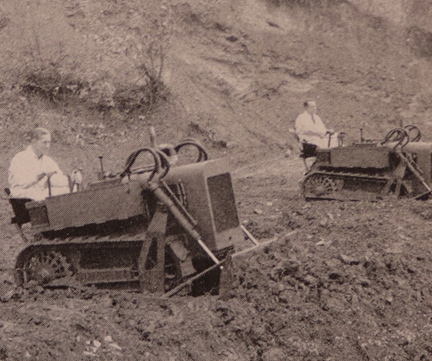
Two of the thirteen prototype C-1 Airborne
Tractors are undergoing testing by Clark technicians.
Author's note: There are several significant
photos below related to the Clark CA-1 Airborne Tractor. The first
two photos are of Serial Number 1433. This is the third CA-1 to
have been built and it is one of the 163 built by Clark. It is the
only one I am aware of that is a Clark-built version.
The photos of the two CA-1 Airborne Tractors shown after
Serial Number 1433 prove that Version B, and a total of 2,555, not
1,121 units, were produced during
World War Two.
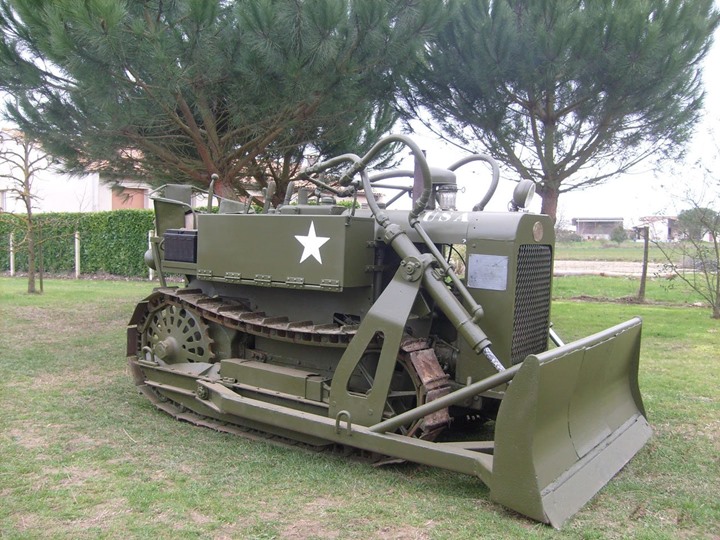
This is the oldest known Clark-built CA-1 Airborne Tractor. It is
in France as part of a larger collection of military vehicles.
Photo courtesy of Carla Vignau added 4-16-2020.
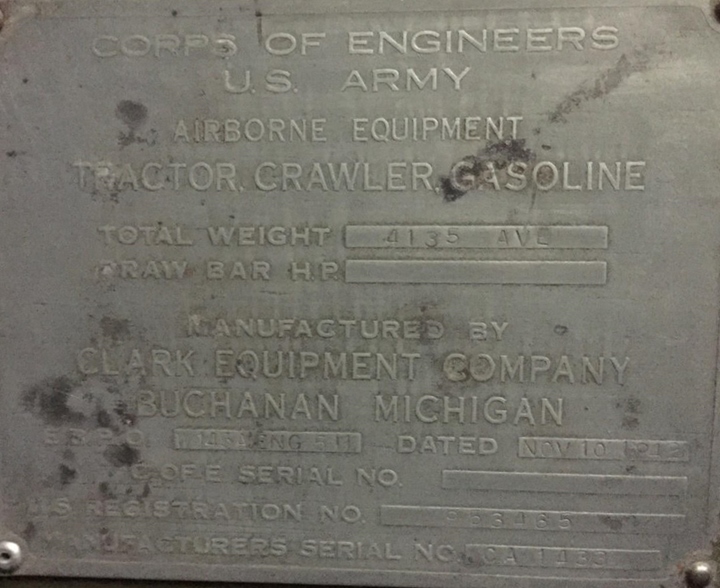
The Serial Number CA-1433 is evident. Photo courtesy of Carla
Vignau added 4-16-2020.
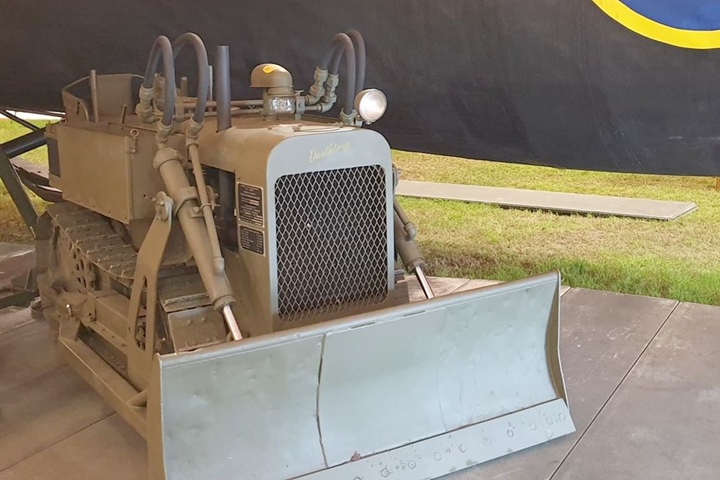
Alex Schmidt of The Netherlands owns this C-1A Serial Number 143878.
It was built on 2-8-1943. It was recovered in France, as it was used by the British in the invasion of Southern France in August
1944. Photo courtesy of Alex Schmidt added 8-1-2020.
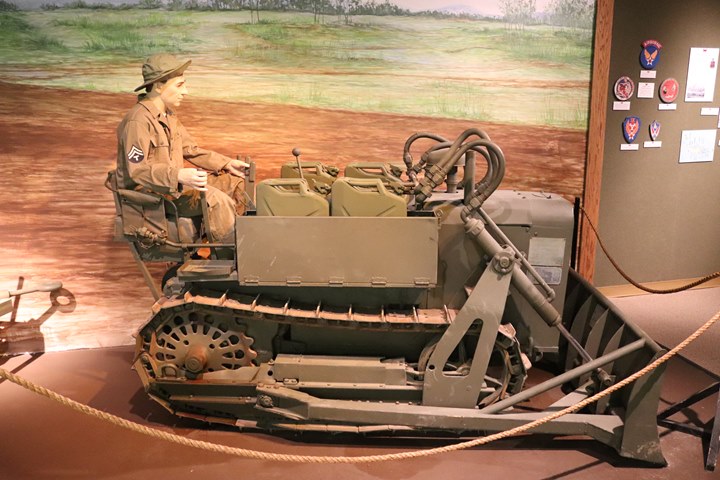
This Clark Equipment CA-1 is on display at the Army Engineer's Museum
at Fort Leonard Wood, MO. Author's photo added 6-27-2018.
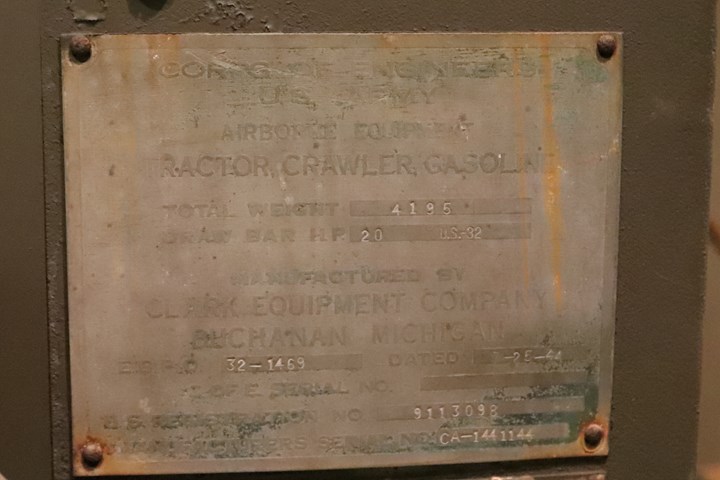
This is one of the 1,460 CA-1s with, until now, unknown serial numbers.
It is CA-1441144, with a contract date of 7-25-1944. Even though
American Machine and Metals
Company
built it, it has a Clark Equipment data plate, because
Clark was the prime contractor.
Author's photo added 6-27-2018.
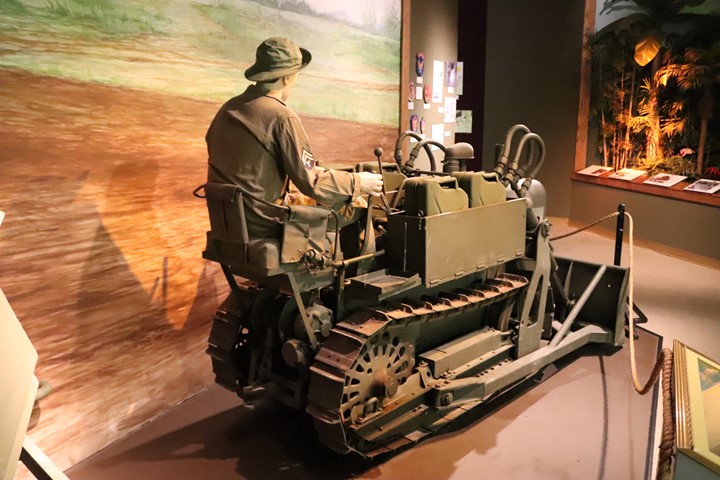
Author's photo added 6-27-2018.
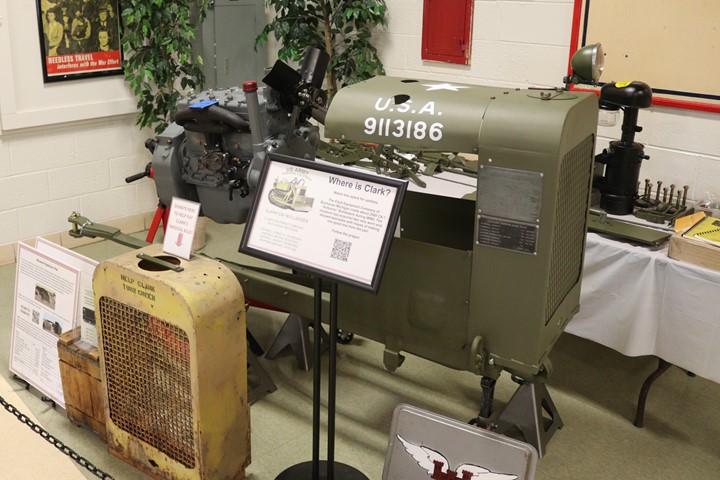
The Michigan Military Technical Historical Society in Eastpointe, MI is
combining the pieces from two partial C-1A Airborne Tractors to make one
restored unit. Author's photo added 2-10-2019.
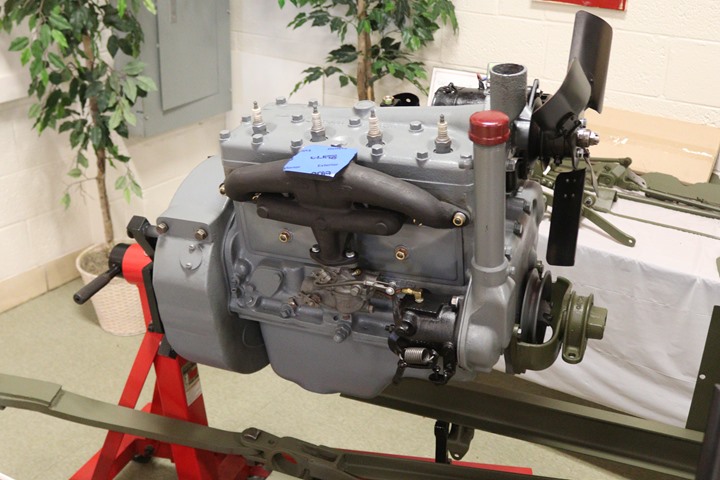
Author's photo added 2-10-2019.
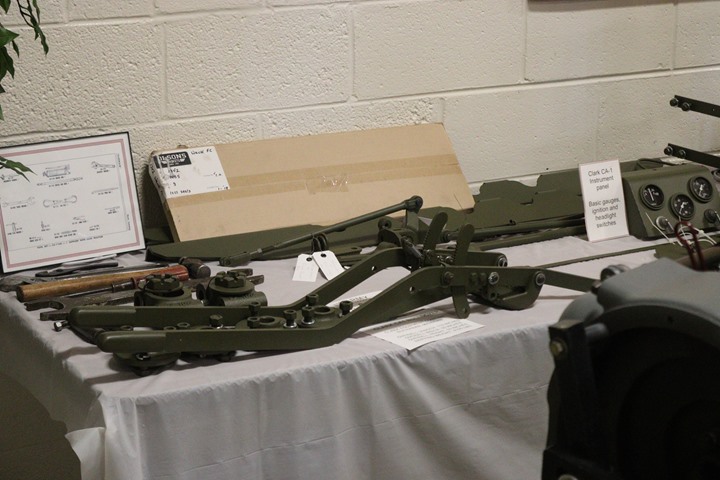
Author's photo added 2-10-2019.
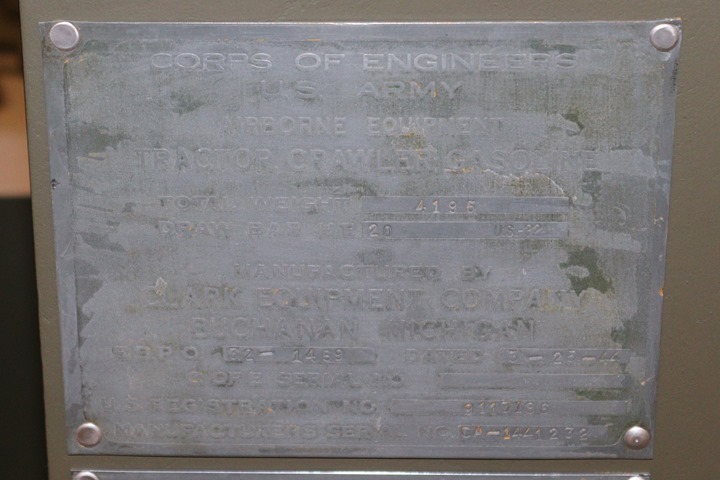
This portion of the restoration was built on 3-25-1944 and is Clark
Serial Number 1441232. Author's photo added 2-10-2019.
Author's note:
Below is the oldest CA-1 I have personally found in my search.
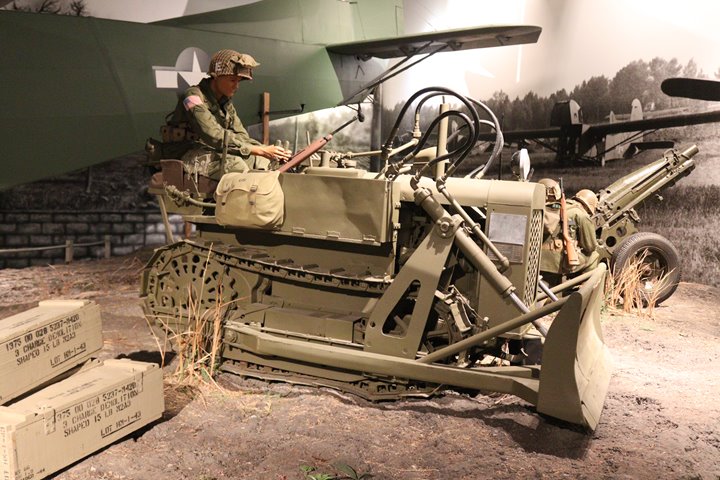
This CA-1 is on display at the Airborne and Special Ops Museum in
downtown Fayetteville, NC. Its contract date is 2-8-1943, making
it the oldest one of its type I have found to date. The Serial
Number is 143948. Author's photo added 5-4-2019.
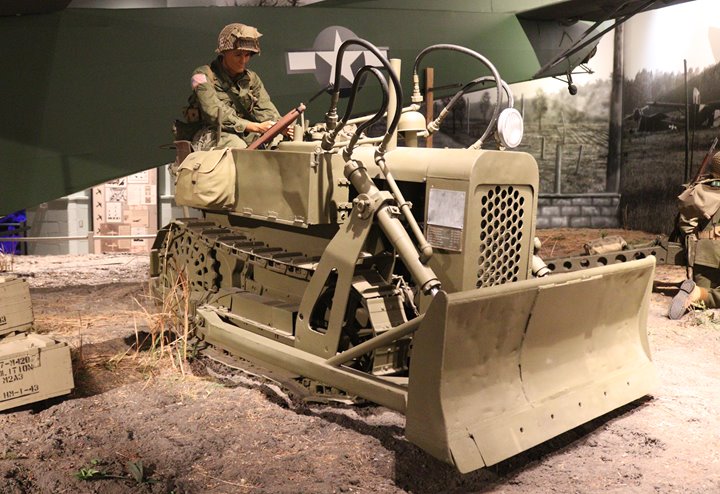
Author's photo added 5-4-2019.
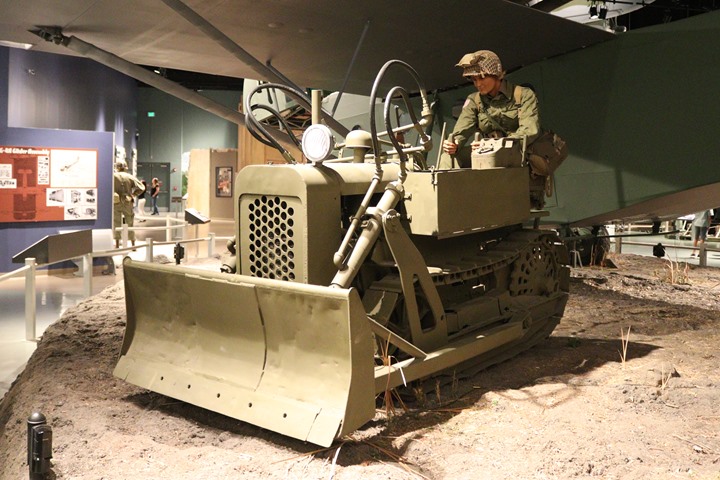
Author's photo added 5-4-2019.
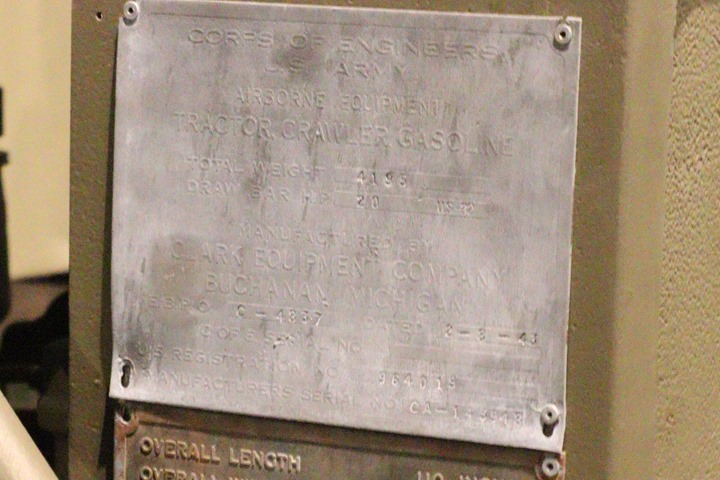
Author's photo added 5-4-2019.
Author's note:
The CA-1 tractors below do not have any serial number
identification.
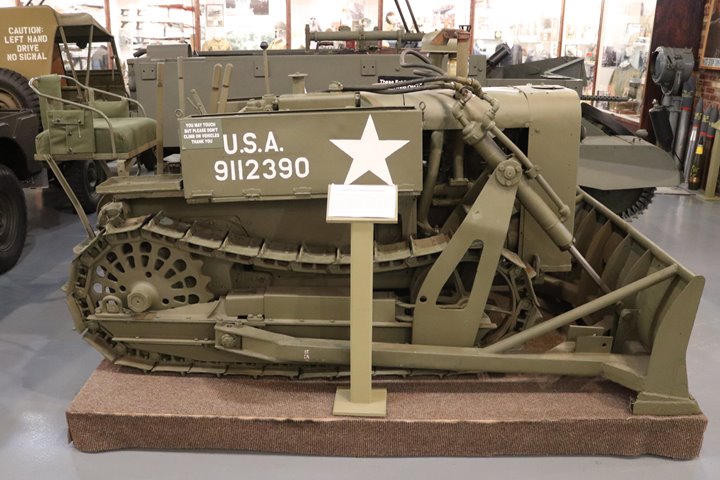
This
CA-1 Airborne crawler tractor is on display at the Indiana Military
Museum in Vincennes, IN. The CA-1 was designed by Clark Equipment
Company for use by
airborne engineering battalions, and to be airlifted into a battle zone
by glider or C-47 aircraft. The CA-1
allowed army engineers to prepare landing strips behind enemy lines. Author's photo.
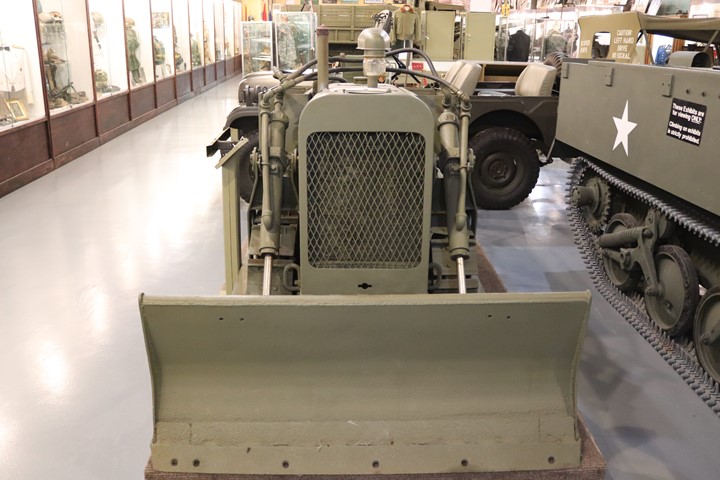
The CA-1 mounted a bulldozer on the front of
the tractor. Author's photo.
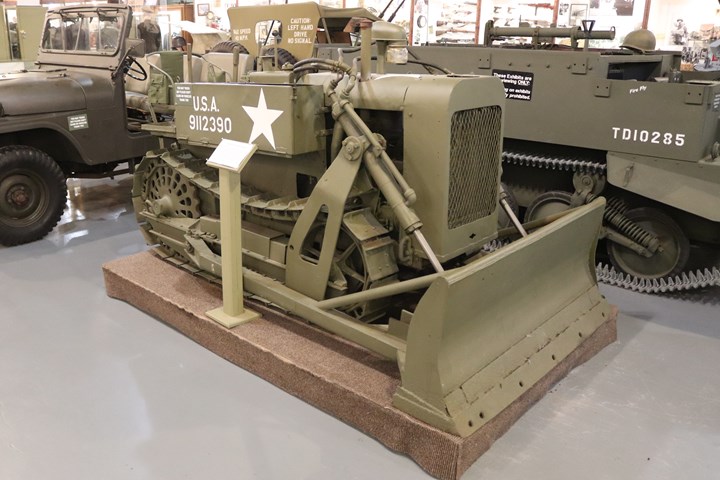
Author's photo.
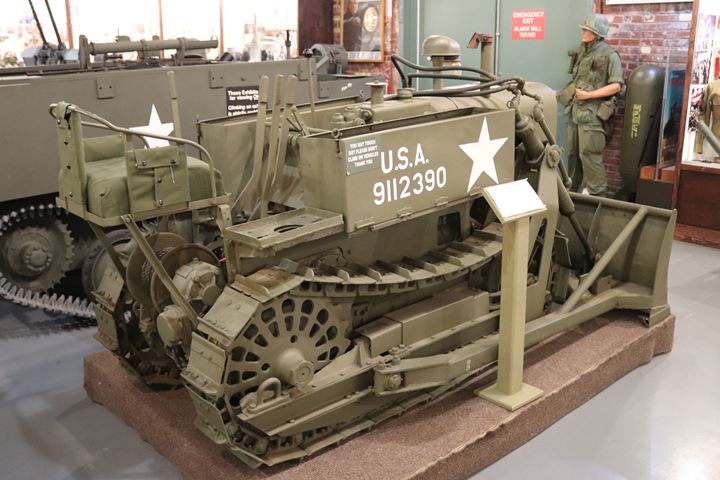
Author's photo.
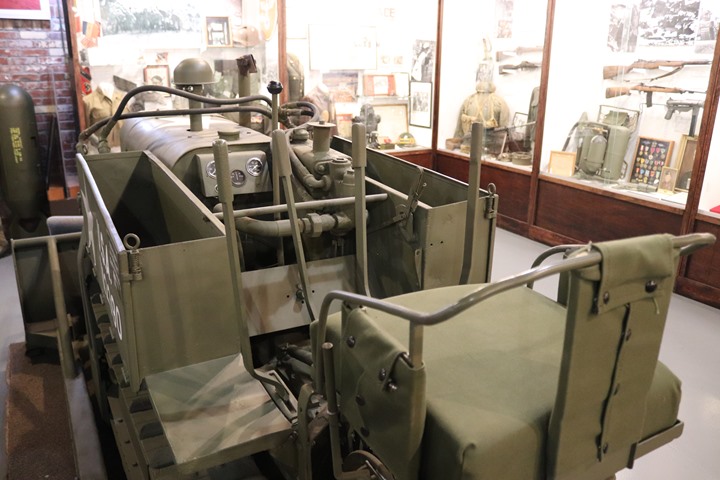
Author's photo.

Author's photo.
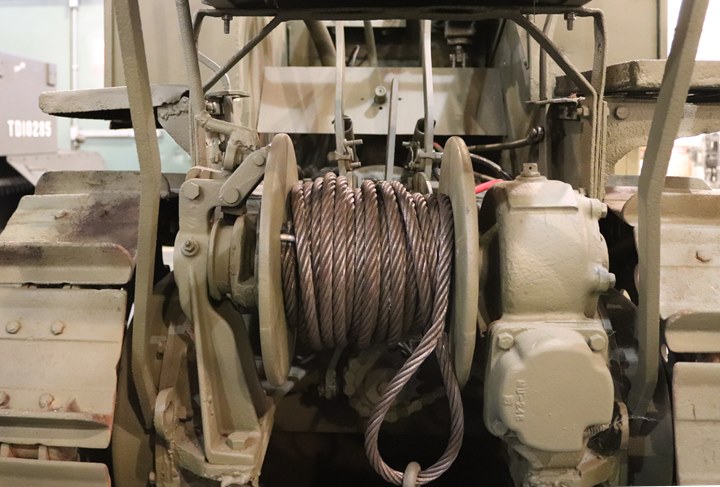
This particular example is equipped with a Braden winch, which allowed the tractor
to be extracted when stuck in mud. Author's photo.
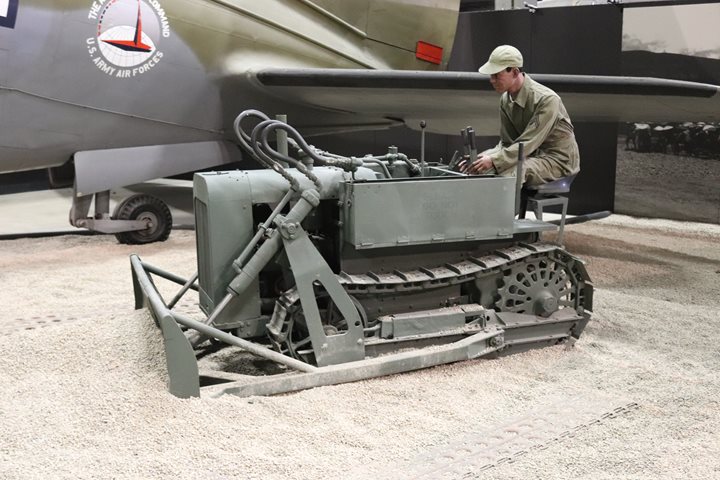
This example of a Clark CA-1 airborne tractor/bulldozer does not have
the winch attached. Author's photo from the National Museum of the
United States Air Force in Riverside, OH.
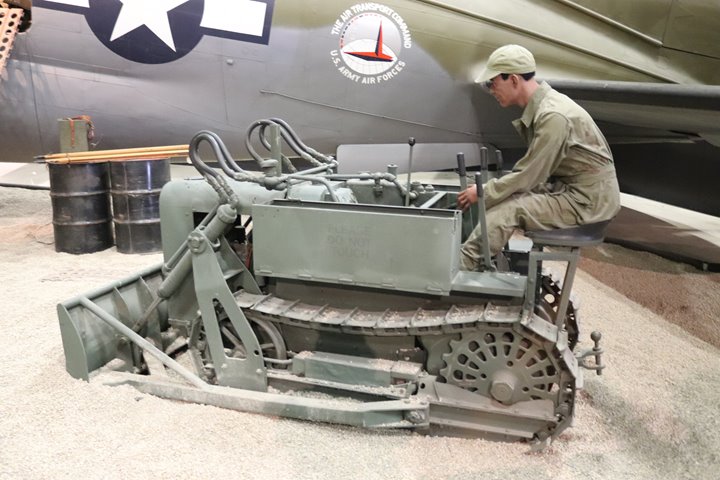
Author's photo from the National Museum of
the United States Air Force.
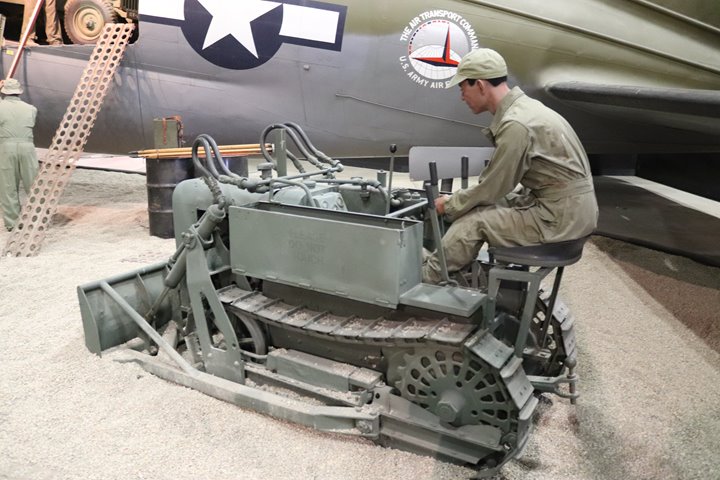
Author's photo from the United States Air Force.
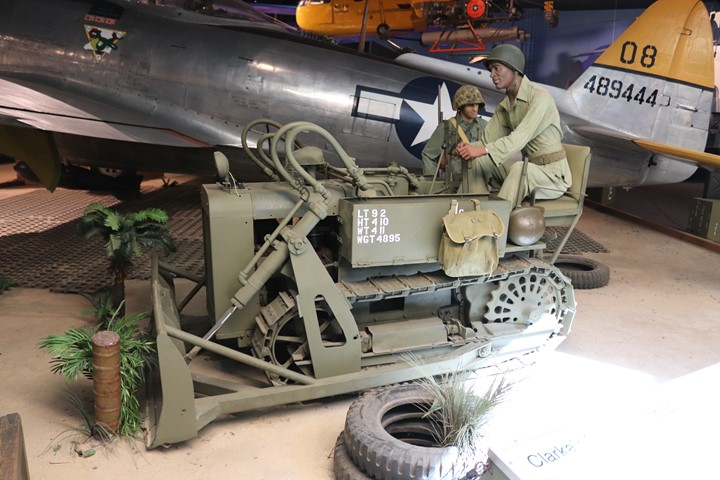
This Clark CA-1 is on display at the Cradle of Aviation Museum in Long
Island, NY. Author's photo added 6-27-2018.
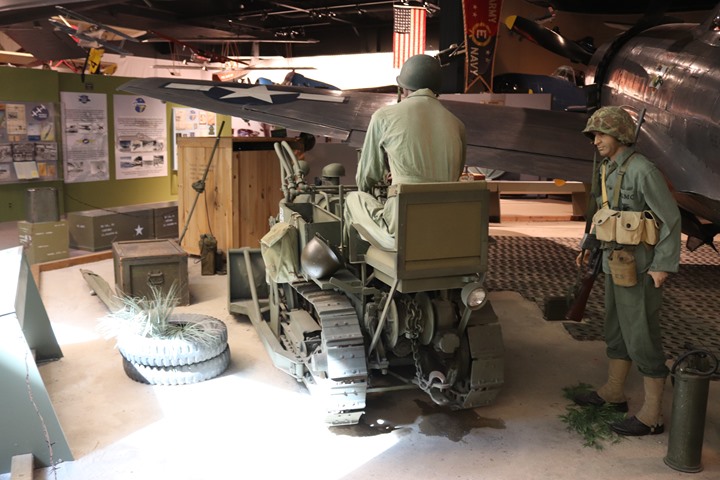
Author's photo added 6-27-2018.
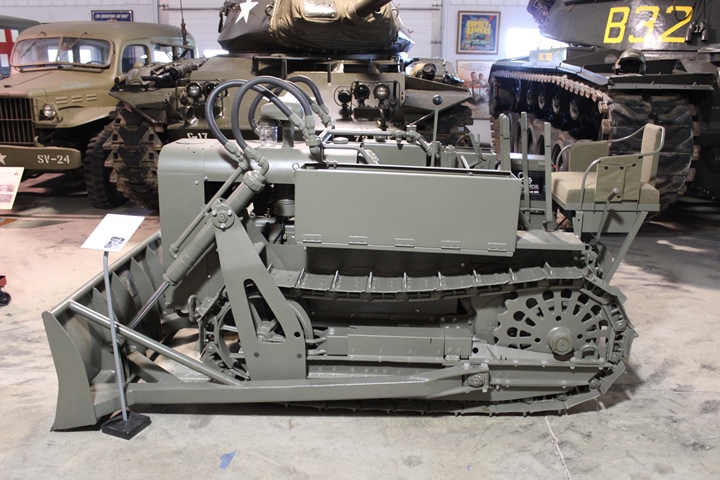
This CA-1 was on display at the former
Ropkey Armor Museum in Crawfordsville, IN. It is unknown where
this vehicle is currently located. Author's photo.
How important were bulldozers to the winning
of World War Two? Below are the thoughts of General Dwight D. Eisenhower
and Admiral "Bull" Halsey.
Asked about the weapons used
to win the war, Admiral Halsey offered: "If I had to give credit
to the instruments and machines that won us the war in the Pacific, I
would rate them in this order: Submarines first, radar second,
planes third, bulldozers fourth."
A quote from "The Great Crusade" by General
Dwight D. Eisenhower: "Incidentally, four other pieces of
equipment that most senior officers came to regard as among the most
vital to our success in Africa and Europe were the bulldozer, the jeep,
the 2 1/2-ton truck and the C-47 airplane."
Below is a prime example of why both General
Eisenhower and Admiral Halsey included the bulldozer in their list of
important machines that helped win World War Two.
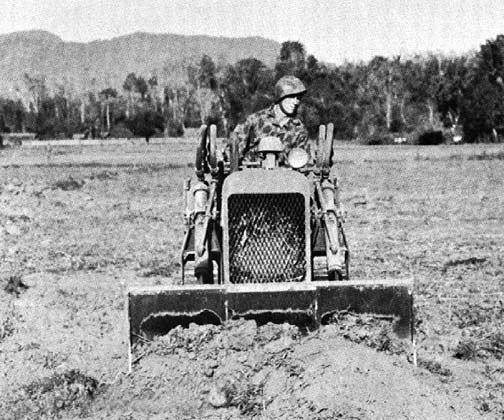
On March 5, 1944, an airborne assault of
thirty American GG-4A gliders landed behind enemy lines in Northern Burma, in
a jungle
clearing designated "Broadway." Included in the landing were Clark
designed CA-1 tractor/bulldozers. Using the small bulldozers, army
airborne engineers were able to prepare a 5,000 foot long runway within 24 hours,
allowing more troops and supplies to come by C-47. Note
the CG-4A glider in the background.
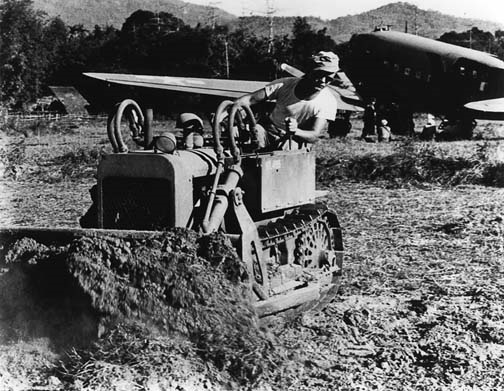
The airstrip has been cleared out to allow
the arrival of C-47 cargo aircraft. General Eisenhower also cited
particular aircraft in his list of important pieces of
equipment during World War Two.
Clark Equipment Tractors:
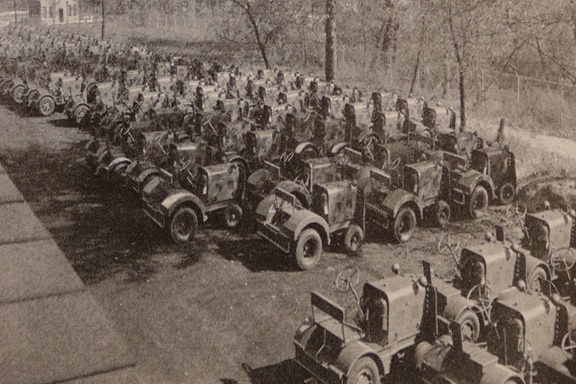
Clarktor tractors await shipment to
airfields around the world.
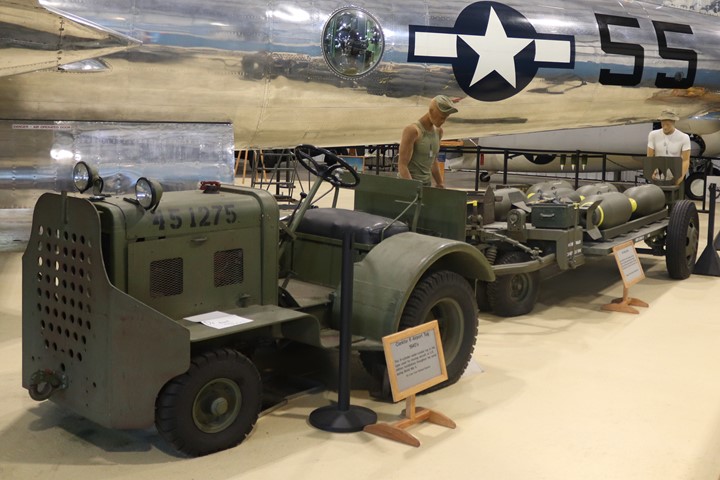
Another contribution of the Clark Equipment
Company during World War Two was the Clarktor-6 towing tractor or tug.
Production of the Clarktor-6 began in 1942 and ended in 1966.
Author's photo from the New England Air Museum added 8-9-2018.
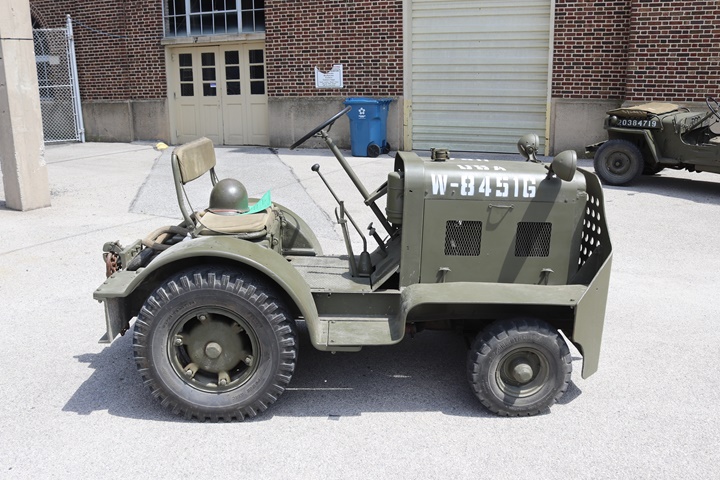
This 1943 Clarktor-6 was on display at the
2019 MVPA National Convention in York, PA. Author's photo added
3-9-2022.
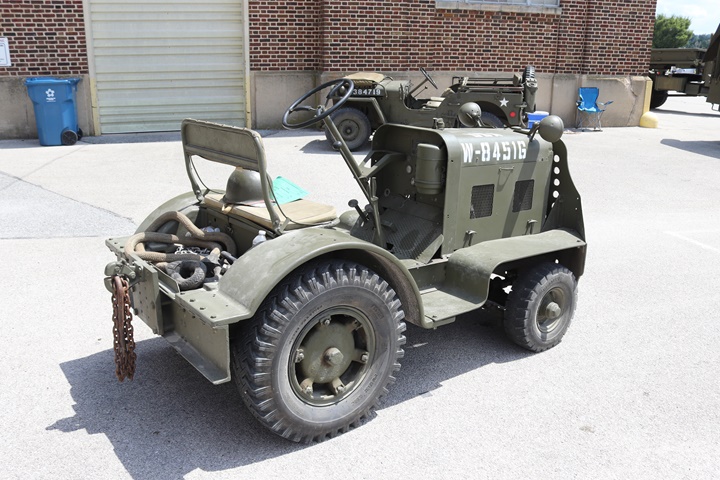
This particular unit was one of six that
were assigned to the Lordstown, OH Ordnance Depot. It was shipped
from the Clark plant on September 30, 1943 and served at the Depot until
1953. It was then purchased by the York, PA airport where it
served until 2016. It is now owned by Mr. Jeremy Dettinger of
York, PA. Author's photo added 3-9-2022.
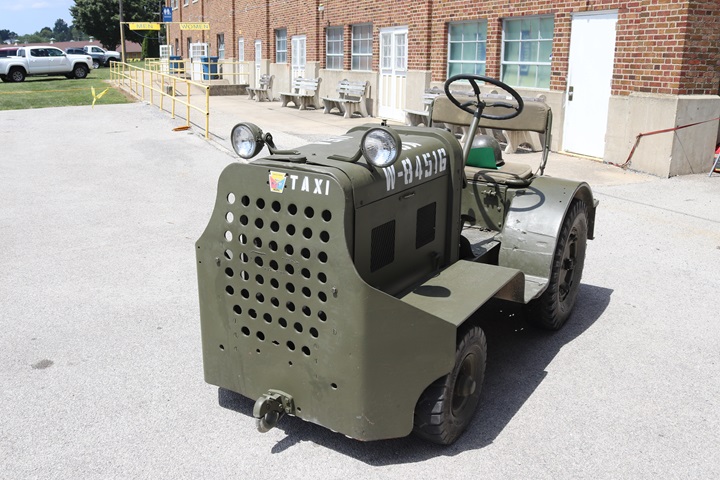
Author's photo added 3-9-2022.
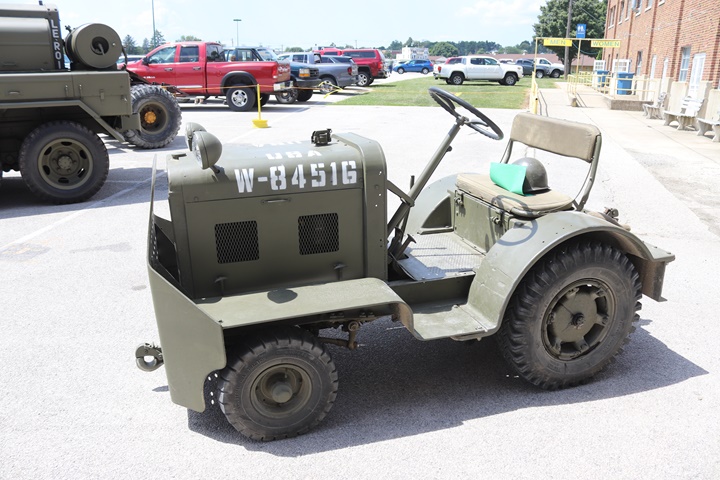
Author's photo added 3-9-2022.
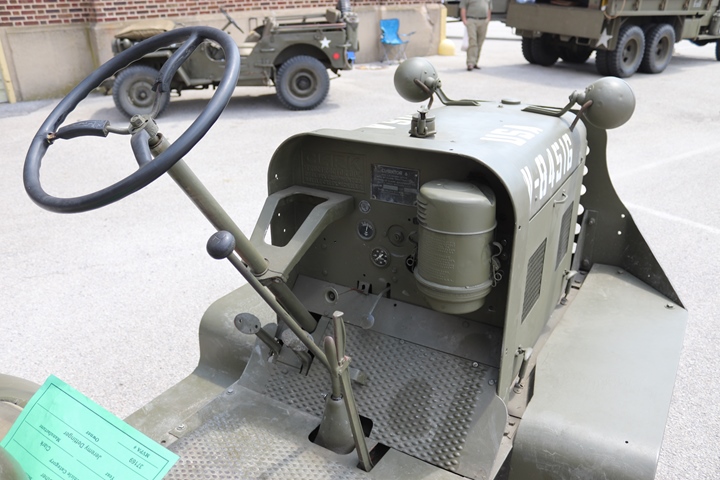
Author's photo added 3-9-2022.
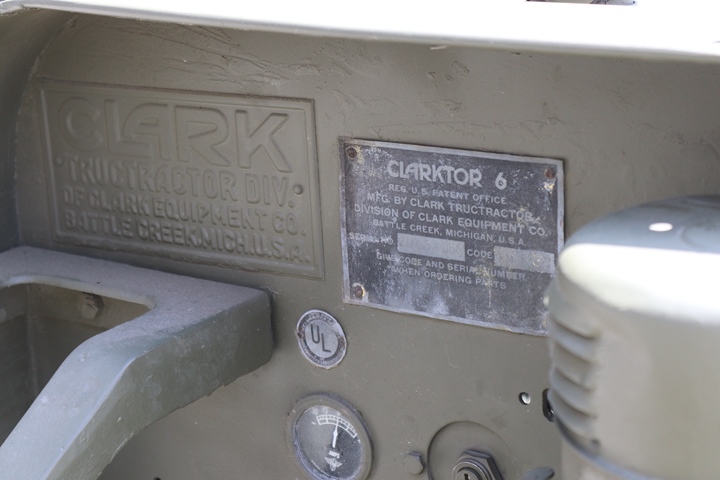
Author's photo added 3-9-2022.
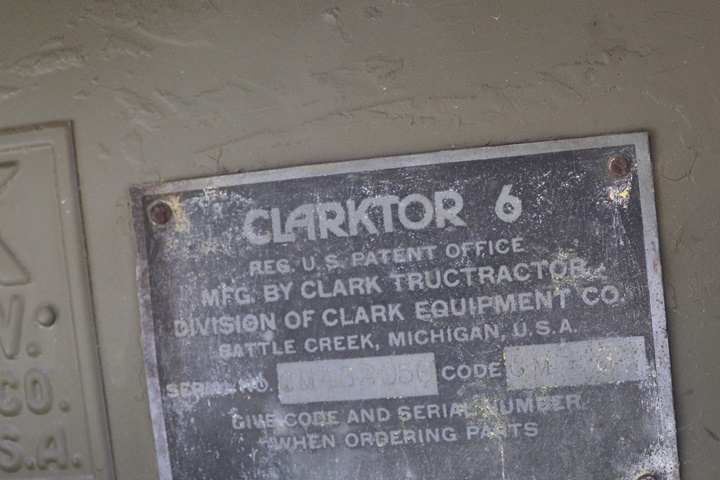
The serial number on the unit is DM 432050.
Author's photo added 3-9-2022.
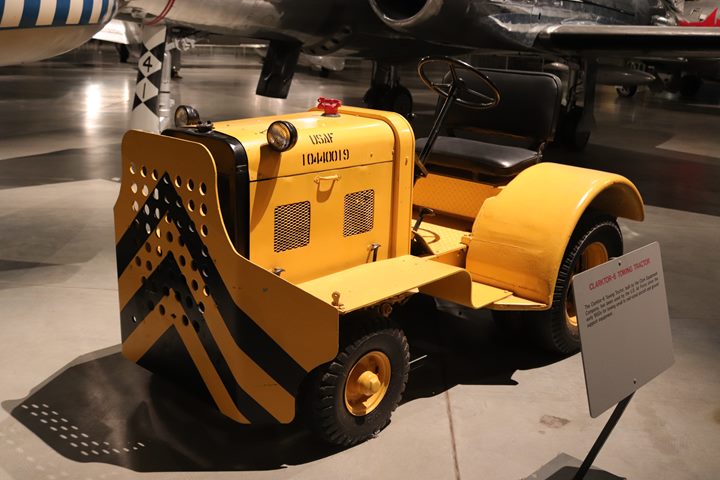
Author's photo from the National Museum of the USAF.
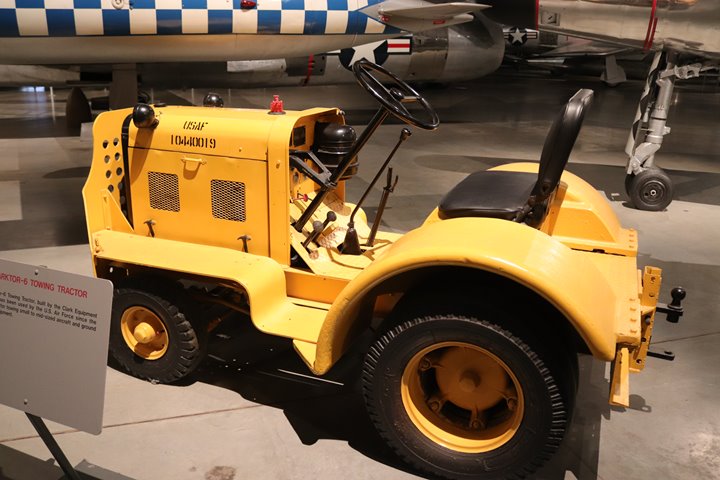
Author's photo from the National Museum of the USAF.
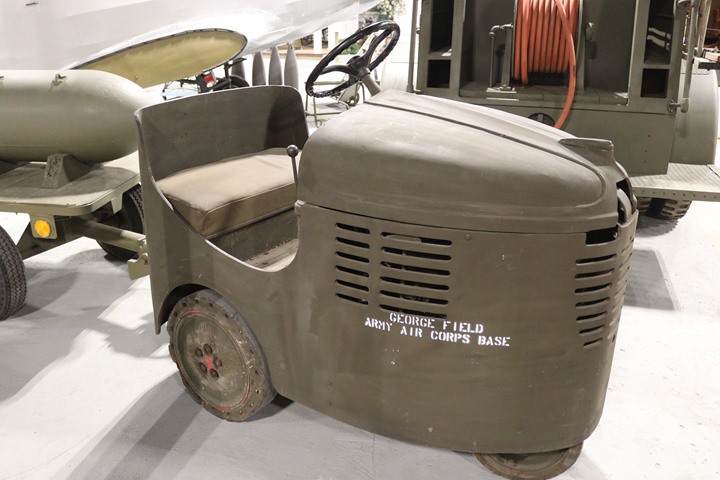
This Clark Equipment Clarkat is on display
in the new annex that was opened in January 2019 at the Indiana Military
Museum in Vincennes, IN. Author's photo added 1-25-2019.
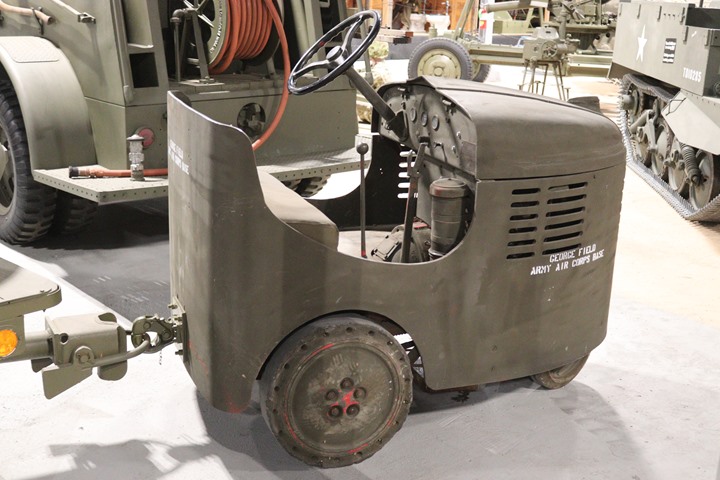
Author's photo added 1-25-2019.
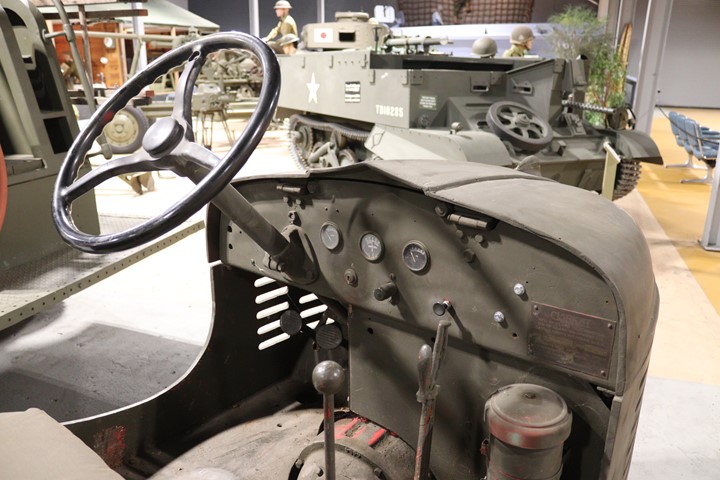
Author's photo added 1-25-2019.
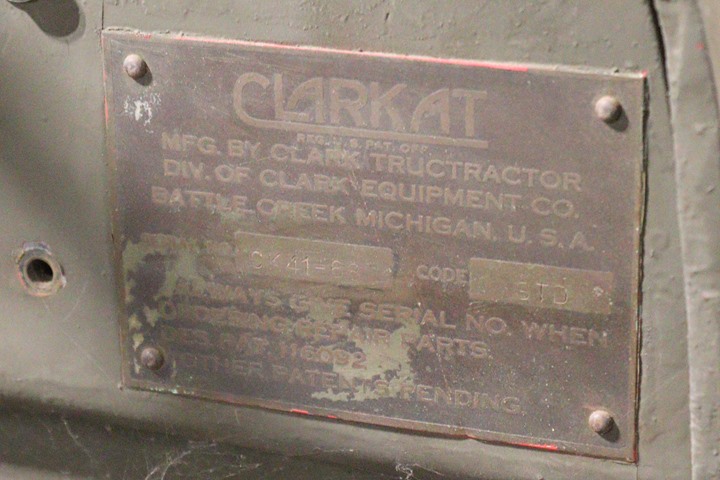
The Clarkat has serial number CK61-68 and
code STD. Author's photo added 1-25-2019.
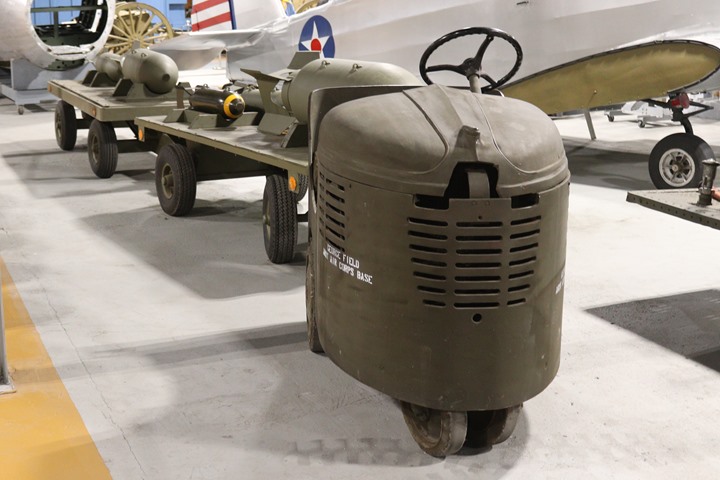
Author's photo added 1-25-2019.
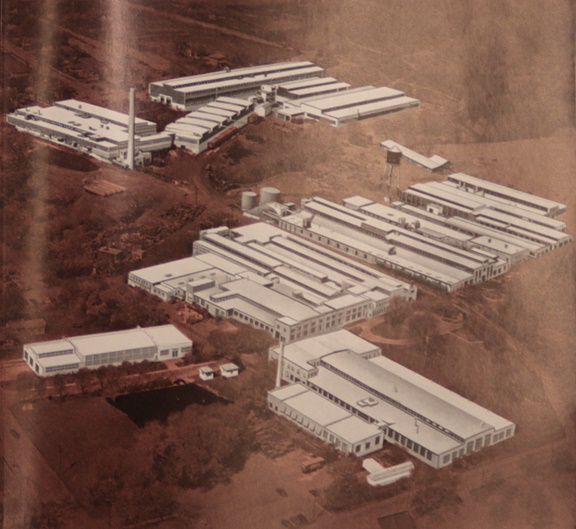
The Clark Buchanan, MI plant produced truck
transmissions and axle housings during World War Two. The plant won the Army-Navy "E" Award two times during WWII.

The Clark Battle Creek, MI Tructractor
Division plant produced forklift and Clarktor tractors during World War
Two. The plant won the Army-Navy "E" Award five times.
At least 162 CA-1 Airborne Tractors were
built in this plant.
|






































































